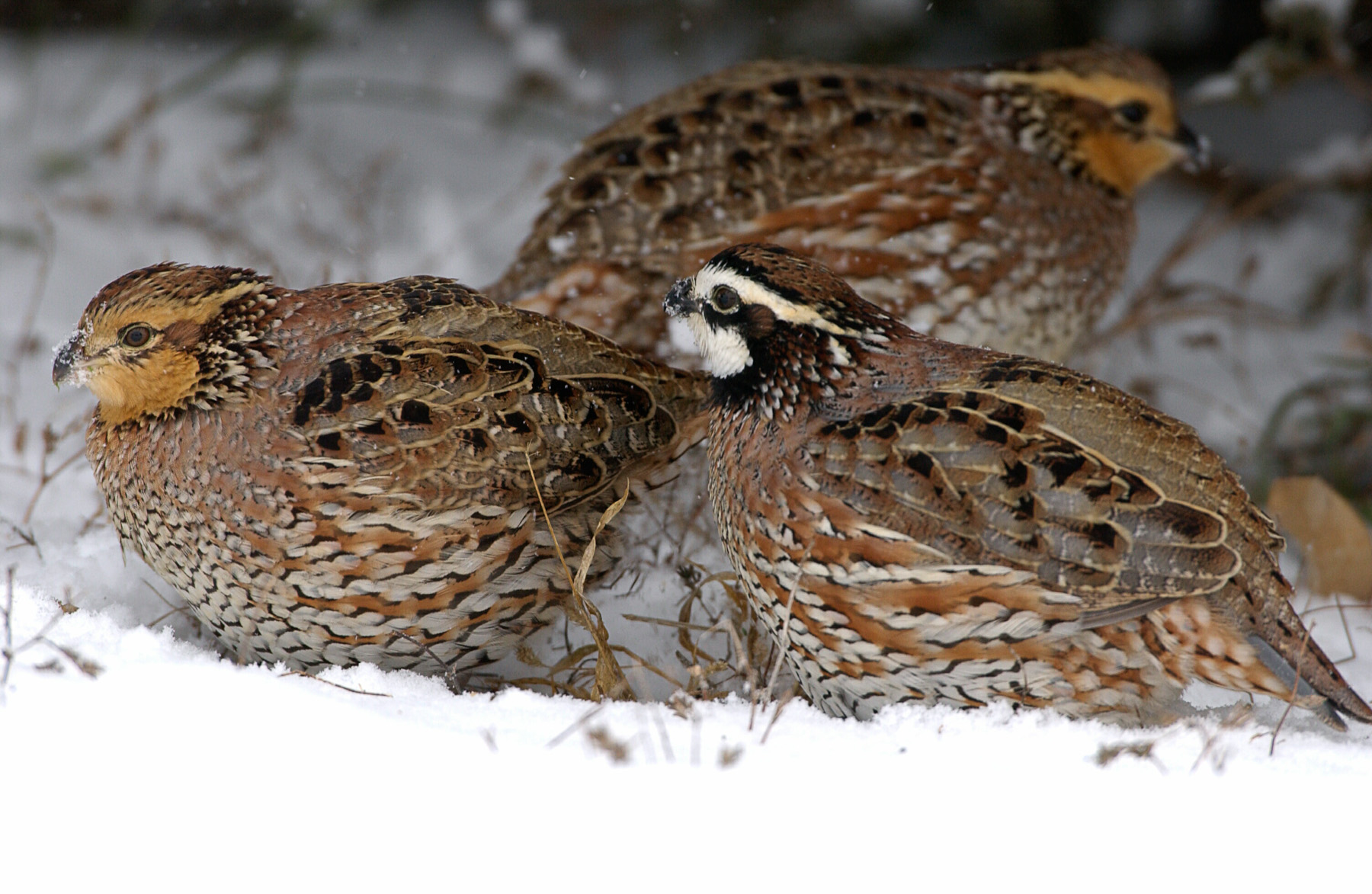Did you know one clutch of baby chickadees are fed 7,000–9,000 caterpillars in just a few weeks?
Multiply that by all the other birds in your yard or on your property, and it's easy to see that birds need a lot of insects!
In 2019, an article in the journal Science reported the net loss of North American birds since 1970. Researchers found that in the last 50 years we’ve lost 2.9 billion, or 29 percent, of North American birds! That means that today the total number of birds flying, eating, and breeding is nearly 3 billion fewer than 50 years ago.
While people who study birds have known that bird populations have been declining, these findings have shaken the scientific and birdwatching communities.
Even species considered common are dropping sharply in number. Breeding bird surveys show population declines ranging from 30 to 77 percent since 1970 — and the numbers are still falling. These species include the eastern meadowlark and northern bobwhite.

Pinpointing exact causes for bird declines is difficult. But scientists who research birds note that several widespread land use practices correspond to the declines. These include:
These widespread changes pose major threats to the long-term health of bird populations in Missouri and throughout the world.
Although many bird species are declining, it’s not all bad news. The silver lining is that we can change this!
It is possible to significantly improve and increase habitat for many of these species within as little as a decade or two.
Bird conservation in Missouri is strong and has a successful track record. But conservation groups cannot effectively tackle all threats and habitat challenges on their own.
A united effort involving agencies, organizations, and the public is necessary to stop the decline of bird populations, especially the most threatened species.
The conservation community, including private landowners and the general public, can make a difference for birds — at large and small scales.
Collisions with human-built structures are the second-largest cause of death for wild birds. Birds see reflections of sky or vegetation in the glass and think they can fly through the window. When a bird hits a window, it either dies on impact or flies off after being stunned. But even if the bird can fly away, the collision could cause brain injuries that affect the bird’s survival later on.
Everyone has had a bird fly into a window at their home or business. To reduce bird-window collisions, place opaque stickers, screens, or sticker-film on the outside of your problem windows so birds will see that the window is not a passageway.
You can purchase window decals designed to deter birds at your local bird store or online. Many products are available, but the key is to place stickers on the outside of the window. Stickers on the inside can be difficult for birds to see due to glare at certain times of day and strikes can still occur.
Planting native vegetation in your yard or on your property is the longest-term improvement you can make for native insects and birds. Feeding birds isn’t limited to putting up birdfeeders — native plants provide a much-needed food source for adult and growing baby birds.
Native plants require no watering and less maintenance because they are native to Missouri and have adapted to our climate. These plants, shrubs, and trees attract native insects, which provide food for our native birds and other wildlife.
Pesticides used in your yard or on your property will kill the insects that birds rely on for food. Keeping pesticides to a minimum will provide birds with a vital food source not only during the breeding season when they feed their young, but also year-round.
Did you know one clutch of baby chickadees are fed 7,000–9,000 caterpillars in just a few weeks?
Multiply that by all the other birds in your yard or on your property, and it's easy to see that birds need a lot of insects!
Cats eat birds and other wildlife because cats are hunters. This isn’t cats’ fault; they’re just following their instincts. But if you are a cat owner, there are things you can do to keep wildlife and your kitties safer.
Cats are the leading cause of death for wild birds. Keeping cats indoors not only protects birds, but also small mammals, reptiles, and amphibians. It also protects your cat from disease or other outdoor threats.
If your cat enjoys being outside, consider creating a catio. Catios are enclosed outdoor spaces designed for your feline friend — they are stylish and relatively easy to install.
Whether you know all the birds around you by sight and sound or are just learning to identify them, you can contribute to science. Submitting your bird observations to community science projects will help scientists track bird populations long-term.
Community science projects that operate nationwide include:
The recent Science article about North American bird declines was largely based on long-term, large-scale datasets from these community science efforts.